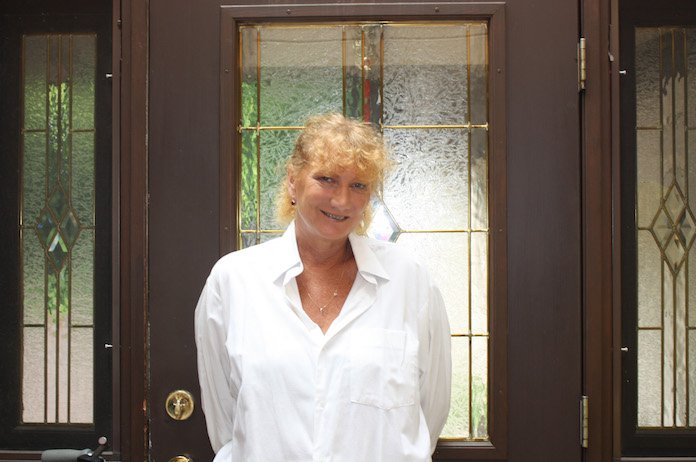Q&A With Carrol Sahaidak-Beaver Of The Cambodia Hotel Association

The B2B team has a chance to catch up with Carrol Sahaidak-Beaver, the Executive Director of the Cambodia Hotel Association, who discusses the development of alternative tourist destinations, the effect of ASEAN integration on the hospitality and tourism sector, and the new ASEAN Training Standards.
With a background working with the private sector, international organizations, non-government organizations and social enterprises, Sahaidak-Beaver has over 24 years of overseas experience in development. She is currently the acting Executive Director and Secretary General of the Cambodia Tourism Federation, and the Secretary General of the Tourism Committee of EuroCham. She is also on the Board of Directors of the Cambodia Chefs Federation and was on the Board of the Cambodian Federation of Employers and Business Associations.
B2B: What are some of the initiatives being undertaken by the private and public sectors to further develop Cambodia as a destination, attract more foreign visitors and make them stay longer?
Sahaidak-Beaver: One of the great things with the formation of the Cambodia Tourism Federation and expanding cooperation between Private Sector to Private Sector and Private Sector to Ministry (G-PSF Tourism) is the enhanced ability to gather ideas, concepts and plans on expanding destination opportunities. It’s partly research and development to understand what foreign visitors want to experience as well as linking this with tourism opportunities. Let’s also remember the domestic tourist.
We are building bridges to connect some of the alternative destination opportunities within Cambodia for Cambodians. This is done through events like the River Festival and the Sea Festival, and looking at marketing opportunities within the country. There is also a results based attitude on targeting international trade shows and balancing these against FAM (familiarisation) trips. We have to be smarter in identifying the markets we want to draw to Cambodia. This is linked to opening opportunities for direct flights and reviewing the visa restraints on tourists. Both have been identified as having a direct effect on tourism numbers.
B2B: Apart from the staple destinations of Siem Reap, Phnom Penh and Sihanoukville, what new locations/zones are being developed as tourist destinations?
Sahaidak-Beaver: The biggest challenge right now is drawing in the information on what is currently available. The information is all there on the wonderful web, but it is scattered all over the place. The first step is centralising the information on current alternative destination opportunities to inform prospective tourists of the options available. That way they can prearrange tour stops over an extended period. Events like the buffalo races in Vihear Sour Village in Kandal Province have a lot of potential.
The boat trip between Siem Reap and Battambang is becoming more and more popular, as is trekking in the Cardamom Mountains, Ratanakiri and Mondulkiri. Luxury cruises up the Tonle Sap are also gaining prominence. The Mekong Corridor offers multiple tourism destinations in addition to river cruises through the region. Each day something is added to the list, but we have to get this information out internationally so travel agents can offer more than temples and beaches to the destination experience. We are currently looking at special economic zones for tourism destination development. But all of this takes times because you need to do environment impact and feasibility studies.

Carrol Sahaidak-Beaver says that tourism professionals in Cambodia now 'have the opportunity to be recognised by an internationally accepted certification process.'
B2B: What changes might we expect in the hospitality & tourism sector as a result of ASEAN integration?
Sahaidak-Beaver: We do not anticipate many changes initially. Much of the integration currently being discussed has already happened — in some cases over a period of years. A major achievement for our industry is the recognition of professionals in the sector through the ASEAN Training Standards. Many Cambodians — both the youth and their parents — look at work in the tourism and hospitality industry as a last resort; it’s commonly their last choice.
However, this is an arena where people can build an exciting career. They can start right away, without having to wait for a four-year bachelor accreditation process. It’s an industry that values experience and on-the-job training. Now with the ASEAN Training Standards, people can be professionally accredited by a certification process that is recognised internationally. This is huge for us as it should draw more people into the industry. We are perpetually experiencing a shortfall in staffing and the opportunities out there are limitless.
B2B: How do you expect the competency level of tourism professionals within Cambodia to change?
Sahaidak-Beaver: Firstly, our professionals that have acquired skills on the job, have gained their experience through real work and not a theoretical training. They now have the opportunity to be recognised by an internationally accepted certification process. Secondly, we now have formal guidelines that identify the specific skills needed to be a professional in specific areas of tourism and hospitality. Already, many are using the competencies to identify where they need to strengthen their own staff and in evaluating new staff. But it’s not limited to that. The packages for each module can be read and used by anyone. This is a checklist of what you need to be able to do to be a professional in the different sectors of the industry. Lastly, for many who have worked in the industry for years, there is now a formal professional recognition.
B2B: What steps should the private and public sector be taking to prepare for a more competitive future? What areas should be prioritised, and how should each be conducted?
Sahaidak-Beaver: For the private sector, it is key to review your strategic plan especially in staffing and cost flow analysis. We are already seeing a great deal of movement in staffing because of the demand for employees, hence what the hospitality and tourism industry is offering in salary packages is getting more and more competitive. Places are looking at loyalty programs and expanding what they are offering beyond the minimum requirements of the Labour Law. More and more training is conducted in-house to develop the personalised systems that relate directly to the business.
For the public sector, continuing analysis is taking place on existing systems (taxation, regulations, laws) that need to be streamlined to be clearer and encourage investment. The move of more and more of the mechanisms of registration and other systems available online is a huge step towards a proactive working environment. We — both the private and public sectors — are steadily improving the way we work together.